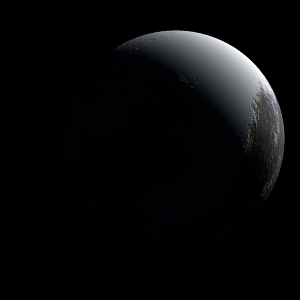|
|
Space Astro
|
Info for exoplanet "Nepro-kesiar"
| Scientific (actual) data |
|---|
| Name | Kepler-883 b |
| Planet status | Confirmed |
| Radius | 0.159 |
| Orbital period | 12.985 |
| Discovered | 2016 |
| Updated | 2021-02-05 |
| Tconj | 2454970 |
| Publication | Announced on a website |
| Detection type | Primary Transit |
| Alternate names | 2MASS J19054408+5018011 b, K01530.01, KIC 11954842 b, KOI-1530 b, KOI-1530.01, WISE J190544.10+501800.8 b |
| Star name | Kepler-883 |
| Right ascension | 286.43° |
| Declination | 50.3° |
| Mag j | 12.05 |
| Mag h | 11.773 |
| Mag k | 11.752 |
| Star distance | 549 |
| Star metallicity | -0.13 |
| Star mass | 1.06 |
| Star radius | 1.09 |
| Star age | 3.02 |
| Star temperature | 6116 |
| Star alternate names | 2MASS J19054408+5018011, KIC 11954842, KOI-1530, WISE J190544.10+501800.8 |
| Wikipedia article | Kepler-883 b |
Back
| |
| Fictional info (?) |
|---|
| Suggested name | Nepro-kesiar |
| Planet type | Cold planet |
| The atmospheric pressure at the planet's surface is 1.3 bar, or roughly the pressure found 540 m under the oceans of Earth.
The two polar ice caps appear to be made largely of rock. |
| Atmosphere | Helium | 82% |
| Carbon dioxide | 7.1% |
| Formaldehyde | 5.5% |
| Hydrogen peroxide | 4.7% |
| Atmospheric pressure | 1.3 bar |
 |
| No known satellites |
| Google search for Nepro-kesiar |
|
Website by Joachim Michaelis
|
|
|
|